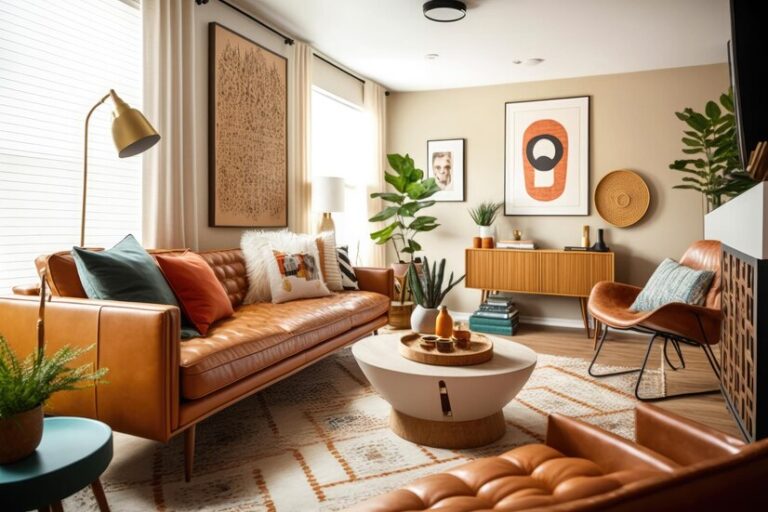Let There Be Light: DIY Blinds & Curtains for Brighter Spaces
Creating a home that feels both welcoming and well-lit doesn’t require a complete overhaul—sometimes, all you need is a slight adjustment to your window coverings. DIY blinds and curtains can transform any room, making it brighter and more cheerful without breaking the bank. In this guide, we’ll walk you through the basics of creating your window dressings that enhance the natural light in your space and add a touch of personal style.
Understanding the Basics of Window Dressings
Before constructing blinds and curtains, it’s crucial to understand the options available and how they can impact your space. Window dressings beautify a room and play essential roles in controlling light, providing privacy, and improving energy efficiency. Different materials and designs can significantly affect how much light filters into a room and how much visibility remains from the outside. Furthermore, some materials can help insulate your home, reducing heating and cooling costs. By choosing the right type of window treatment, you can enhance the aesthetic appeal of your space while also making it more functional and comfortable for everyday living.
Types of Blinds and Curtains
Blinds: These are typically made from wood, metal, or synthetic fabrics that can be adjusted to control the light entering a room. They come in various styles, including Venetian, roller, and Roman, each offering different levels of light control and privacy.
Curtains: Fabric-based and generally more decorative, curtains come in countless styles, colours, and patterns. They can be sheer to allow more light to penetrate or lined with blackout material for those who need extra darkness.
DIY Tips for Crafting Custom Window Blinds
Creating custom window blinds allows you to tailor your light control solutions to your specific needs and decor preferences. Here’s how you can get started:
Choosing the Right Materials
The first step in creating DIY blinds is selecting the suitable materials. If you aim to increase brightness, opt for lighter colours and materials that reflect light rather than absorb it. Materials like light bamboo or thin, woven fabrics work well for letting in sunlight while maintaining privacy.
Measurement and Cutting
Measure your window dimensions carefully before cutting any material. Accuracy is critical to ensuring your blinds look professional and function properly. Once you have your measurements, cut your material to size, considering any hemming or mechanisms you’ll need to install.
Enhancing Light with DIY Curtain Projects
Curtains provide an excellent opportunity to play with light and colour in your home. Depending on your preference and sewing skills, they can be straightforward or elaborate.
Selecting Fabrics
Choose lightweight fabrics like cotton, linen, or silk for brighter spaces. These materials allow daylight to filter through softly, giving the room a bright, airy feel. Patterns with bright colours or subtle pastels can also help reflect light and brighten a room.
Sewing and Hanging
If you’re new to sewing, start with simple curtain designs such as rod-pocket curtains, which are easy to make and don’t require complex hardware. For hanging, ensure that the curtain rod is slightly wider than the window to allow the curtains to hang without blocking light when they are open.
Integrating Light and Style with Custom Window Blinds
Custom window blinds are the way to go when you want style and functionality. They can be designed to fit any window shape and size, providing perfect light control with a personalised touch.
Mechanisms and Adjustments
Incorporate mechanisms that allow easy adjustment of the blinds. Options like cords, wands, or even motorised systems can be installed to help you effortlessly adjust the light throughout the day.
Decorative Touches
Add decorative touches like valances or trim to give your DIY blinds a more finished, upscale look. These elements can tie the blinds into the room’s overall decor scheme and enhance their aesthetic appeal.
Conclusion: Brightening Your Home with DIY Solutions
With these DIY tips for blinds and curtains, you can take control of your home’s lighting and create spaces that are not only bright but also welcoming and uniquely yours. Whether you construct custom window blinds tailored to each room’s specific needs or sew your own curtains that reflect your style, the key is to customise these solutions to fit seamlessly with your lifestyle and decor preferences. This project allows you to infuse your space with a sense of accomplishment and personal touch. So grab your tools and fabrics, and let there be light—crafted by you for the comfort and beauty of your home.
And before you go, be sure to read through some of our other helpful posts!







